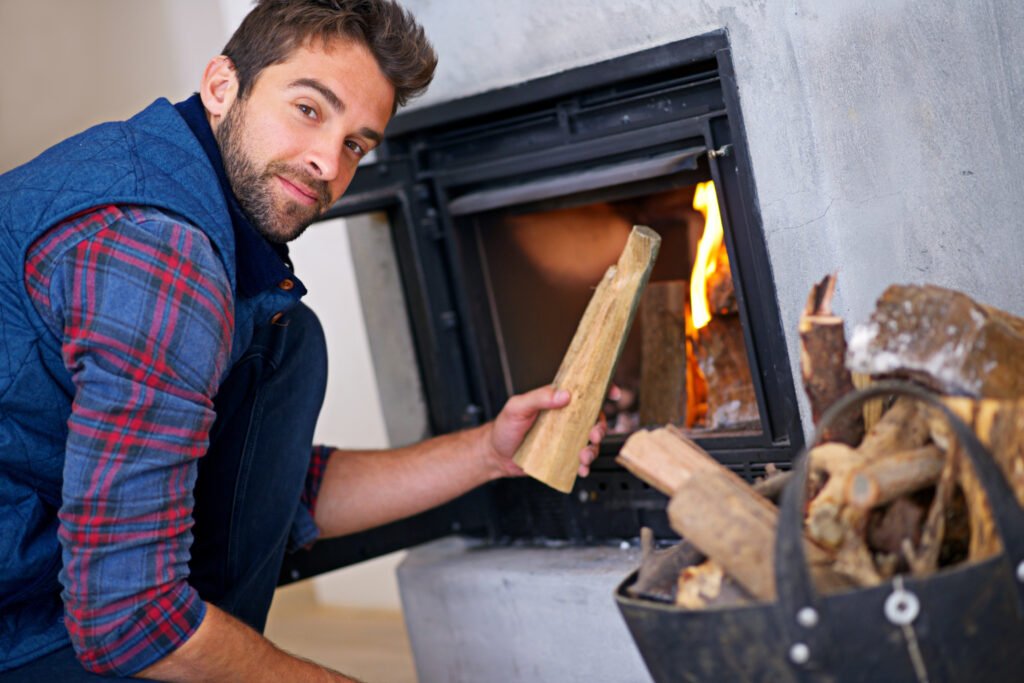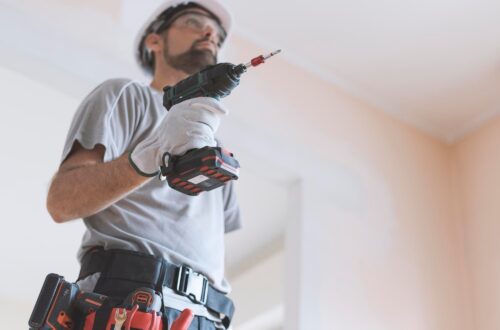Wood Burning Fireplace – Cleaning and Maintenance Tips
If you’re looking for a way to add warmth and comfort to your home, consider the benefits of heating with wood. You can do this by using a traditional wood-burning fireplace or a modern pellet stove. Not only is heating with wood an efficient and cost-effective way to heat your home, but it also provides long-term savings and environmental benefits. With the right equipment and maintenance, you can enjoy the cozy atmosphere of burning wood without having to worry about rising energy bills or air pollution.

Wood Burning Fireplace Cleaning Basics
If you have a wood-burning fireplace, chances are you enjoy the warmth and charm it brings to your home. But with regular use comes regular maintenance! Cleaning your fireplace is essential to keeping it in proper working order. But don’t worry – it doesn’t have to be complicated. Here’s a quick guide on the basics of how to clean a wood-burning fireplace.
Start by clearing out any debris or ash that has accumulated inside and around the firebox (the area where logs are burned). You can use either a metal dustpan or a small shovel for this step. Next, take out any large pieces of creosote buildup from the walls of the firebox using an approved chimney brush and rod set. This should be done every couple of months, as creosote is highly flammable and can easily ignite if left unchecked.
Removing Ash and Debris from a Wood Burning Fireplace
One of the regular tasks is to remove ash and debris from your wood-burning fireplace. This process may seem daunting, but it’s actually quite simple. Begin by wearing protective gear such as gloves and a face mask. This will ensure you don’t breathe in too much dust or ash. Carefully scoop out any loose ash or debris into an appropriate container, such as a metal bucket or lidded trash can with a bag liner. Make sure that the ashes have cooled before attempting this task. If you’re unsure if they’re cool enough, wait another 24 hours just to be safe!
Inspecting the Chimney
Chimneys are an important component of a wood-burning fireplace but often don’t get the attention they deserve. Regularly inspecting your chimney can help prevent safety issues and save you money in the long run. Knowing when to have your chimney inspected, what to look for during inspections, and how to respond if something is wrong can help protect you and your family in the cold winter months.
Before lighting that first fire of the season, it’s a good idea to have your chimney professionally inspected. A qualified professional will be able to properly assess any damage or blockages. They can also make sure everything is up-to-code before you light that first log. A professional can also recommend any needed repairs or maintenance. They will explain any potential safety hazards associated with using a wood-burning fireplace.
What is a Damper on a Wood Burning Fireplace
While many of us enjoy the sound and smell of an open fire, few of us understand what lies behind its safe operation. One essential component that is often overlooked is the damper on a wood-burning fireplace.
A damper is a metal plate or valve that fits inside the flue or chimney of your wood-burning fireplace. Its purpose is to regulate the flow of air in and out of your fireplace by opening and closing to control how much smoke escapes into your home. When not in use, the damper should be closed tightly to prevent any heat from escaping through the chimney. Thus keeping your home energy-efficient and reducing heating costs.
How Tall Should My Chimney Be
When you have a wood-burning fireplace, sometimes it can be difficult to determine how tall your chimney should be. Depending on the location of your house and the size of your fireplace, there are some important factors to consider when deciding on the height.
The most important factor is to ensure that your chimney is at least three feet above any roof structure or tree line that’s within ten feet of the chimney itself. This will prevent any smoke from entering through windows and doors near the fireplace. Additionally, if you live in an area with high winds, making sure your chimney is at least two feet higher than nearby structures can also help minimize smoke blowback into your home.
Maintaining a Heat Shield on a Wood Burning Fireplace
Maintaining a heat shield on a wood-burning fireplace is essential for safety and efficiency. Heat shields are designed to protect the wall behind the fireplace from extreme temperatures. It also reflects heat back into the room. Without a proper heating shield, your home can become unsafe. And your energy bills can skyrocket due to heat being wasted instead of staying in your home.
Caring for a wood-burning fireplace with a heat shield requires regular inspection and maintenance. This includes inspecting the brickwork and mortar of the firebox. These areas can be subject to damage from high temperatures. Check all parts of the heat shield including any insulation material or sheet metal that may have been added after installation. It’s important to look out for any gaps between walls and other surrounding materials. These will allow too much-heated air to escape, reducing efficiency as well as posing an increased fire hazard risk.
Choosing the Right Wood for Your Wood-Burning Fireplace
If you’re looking to install a wood-burning fireplace in your home, it pays to make sure you select the right wood. Not all types of wood are created equal, and selecting the wrong type can be a costly mistake. Here are some tips for choosing the best firewood for your needs.
First and foremost, look for seasoned or “aged” woods. This means that it was cut down at least six months prior, allowing ample time for all moisture to escape. Unseasoned logs will take longer to burn and create more smoke in the process, so they’re best avoided when possible. You should also avoid softwoods like pine or cedar as they tend to produce more smoke than other hardwoods like oak or hickory.
Fire Safety Tips
If you’re one of the many homeowners out there who loves the look, smell, and warmth of a wood-burning fireplace, it’s important to be aware that there are certain fire safety tips that should always be followed. Wood-burning fireplaces can cause serious damage if not properly maintained or used safely.
The first tip to keep in mind is that all combustible materials must be kept away from the fireplace at least three feet away. This includes furniture, curtains, rugs, and anything else that could easily catch fire. It’s also important to have a fire extinguisher handy. A fire blanket should also be within reach if one is available.
Do not leave your fireplace unattended when you go to bed or are away from home.
Final Thoughts – Regular Care and Maintenance of aWood-Burningg Fireplace
Wood-burning fireplaces are a cozy and inviting home addition, with great potential to warm up your living space. But in order to keep your wood-burning fireplace running at its best, regular maintenance and care is key.
A few simple steps are all that’s needed to ensure your wood-burning fireplace is functioning safely and efficiently. To start, check the chimney regularly for any signs of cracks or debris buildup. You’ll also want to monitor the operation of your damper and make sure it opens and closes properly. Additionally, keep an eye on the condition of the flue liner – one that’s cracked or damaged will need immediate attention from a professional technician.







One Comment
Pingback: